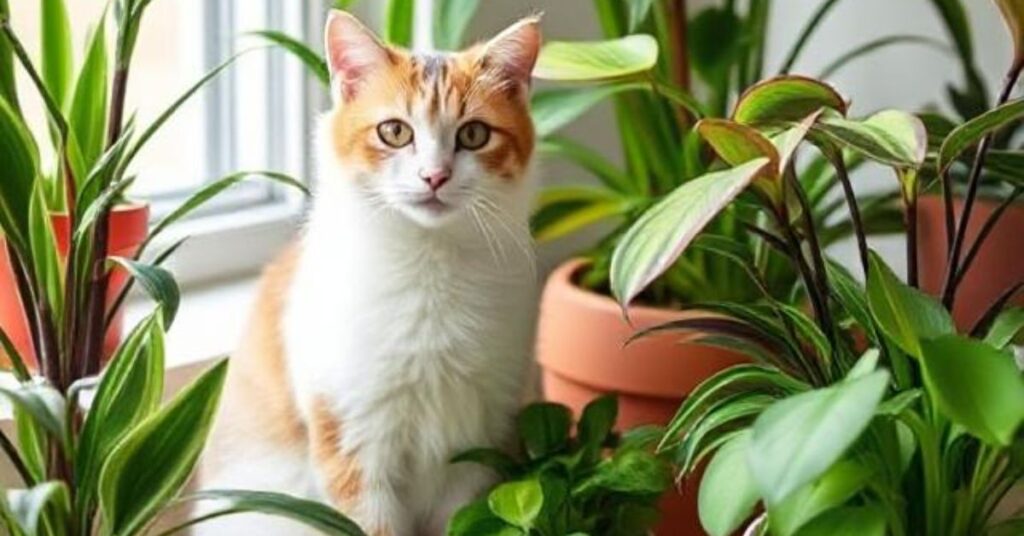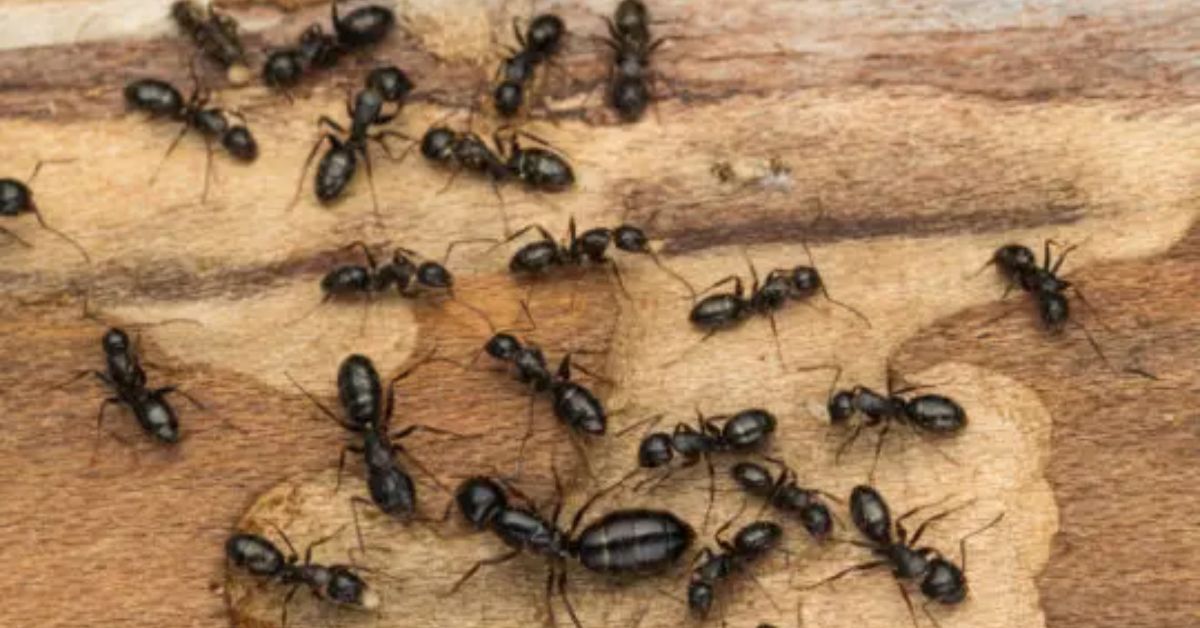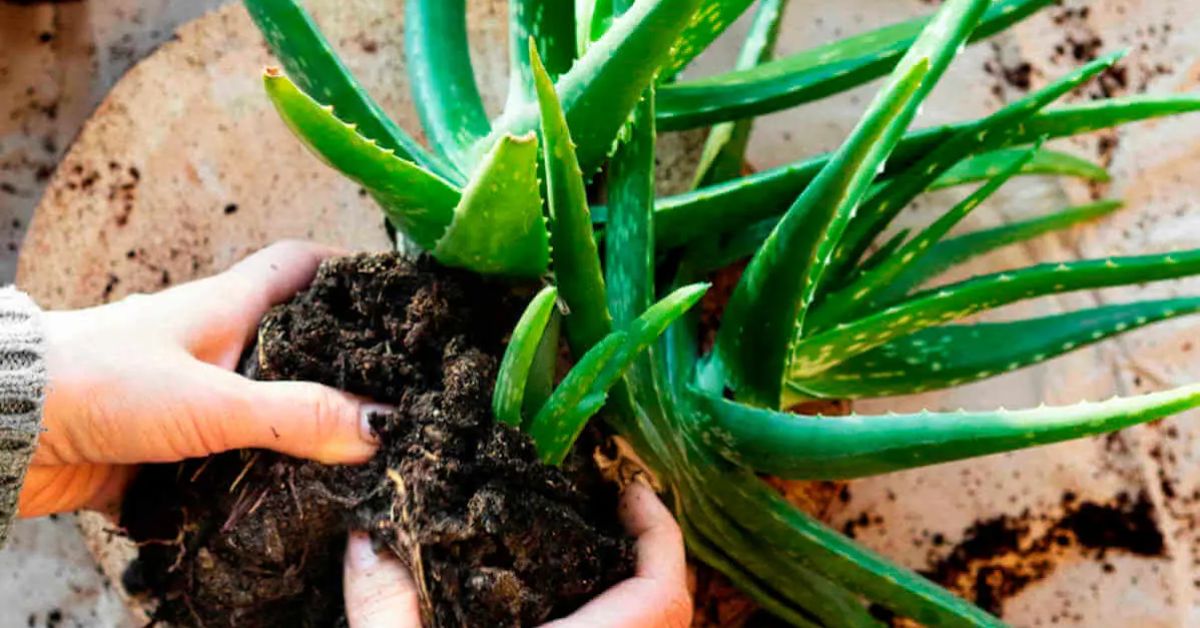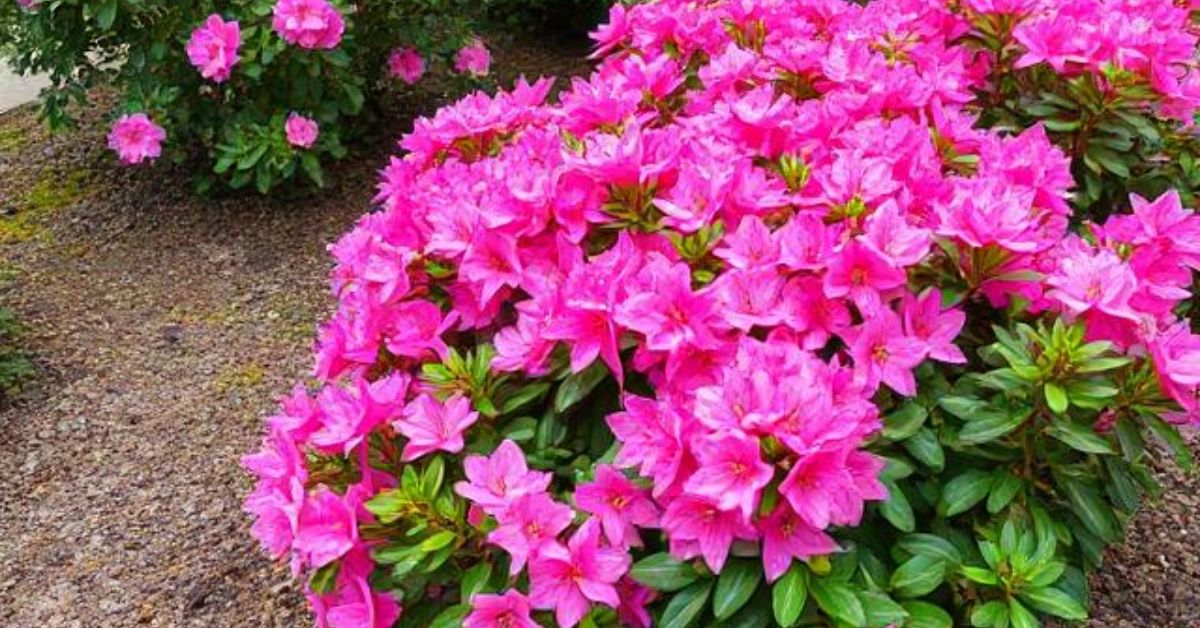Bringing cat friendly house plants into your home adds beauty, improves air quality, and creates a calming atmosphere. However, choosing the right plants is essential to keep your feline friend safe if you’re a cat owner. Many common houseplants can be toxic to cats, leading to digestive issues, skin irritation, or even severe poisoning if ingested. That’s why selecting cat-friendly, non-toxic plants is the best way to enjoy greenery without worrying about your pet’s health.Fortunately, plenty of beautiful, easy-to-care-for plants are completely safe for cats. From the lush Areca Palm to the elegant Boston Fern, these plants enhance your home and ensure a pet-friendly environment. Some, like Spider Plants, are even known to be fun for cats, as they love to bat at the dangling leaves!
In this guide, we’ll explore the best indoor cat-friendly houseplants, their benefits, and tips on keeping your plants and pets happy. Whether you’re a seasoned plant enthusiast or just getting started, you’ll find the perfect greenery that complements your home—without posing a risk to your furry companion.
What Makes a Houseplant Cat-Friendly?
When choosing houseplants for a home with cats, the most critical factor is ensuring they are non-toxic to felines. There are compounds in several plants that can be dangerous if consumed,so it’s crucial to pick safe varieties for your pets. A cat-friendly houseplant won’t cause health issues like digestive distress, vomiting, or poisoning if your curious cat decides to nibble on its leaves.To identify cat safe houseplants, look for those specifically labeled as non-toxic by the ASPCA or other trusted sources. These plants are generally free from harmful compounds such as saponins, Are Those Stripes Safe calcium oxalate crystals, and alkaloids—all of which can cause adverse reactions in cats. Many of the safest options cat friendly house plant feature soft foliage (instead of thorny or toxic parts) that won’t irritate a cat’s digestive system or cause harm if consumed in small amounts.
In addition to are pineapple plants toxic to cats, the plant’s structure plays a role in how safe it is for cats. For example, plants with sturdy stems and leaves are less likely to be knocked over by playful paws, reducing the risk of accidents. Offering cats safe alternatives, such as cat grass, Additionally, it satisfies their innate want to chew without posing a health risk.
Top 15 Cat-Friendly Houseplants
Boston Fern (Nephrolepis)
Boston ferns are a popular cat friendly plants indoor choice, known for their lush, arching fronds. Sometimes called sword ferns, their foliage grows upright from the center before gracefully cascading as they mature.Fortunately, Boston ferns are non-toxic to cats and dogs, making them a safe and attractive addition to your home. They thrive in high humidity and bright, indirect light.
- Light: Partial sun
- Water: Keep soil lightly moist with weekly watering
- Soil: Moist, well-drained, acidic
African Violet (Saintpaulia)
African violets are one of the most beloved flowering house plants for cats and are safe for pets. They bloom well in low light and prefer moderate temperatures with average humidity.
- Light: Partial sun
- Water: Water from the bottom; do not allow standing water
- Soil: Moist, well-drained, slightly acidic to neutral
Baby’s Tears (Soleirolia soleirolii)
This creeping plant forms a dense mat of tiny green leaves, Best Fast Growing Trees for Small Yards making it an excellent choice for terrariums, hanging baskets, or as a companion plant around indoor trees. Baby’s tears may even deter pets from digging in your plants.
- Light: Partial sun to shade
- Water: Keep soil consistently moist
- Soil: Rich, moist loam, slightly acidic
Chinese Money Plant (Pilea peperomioides)
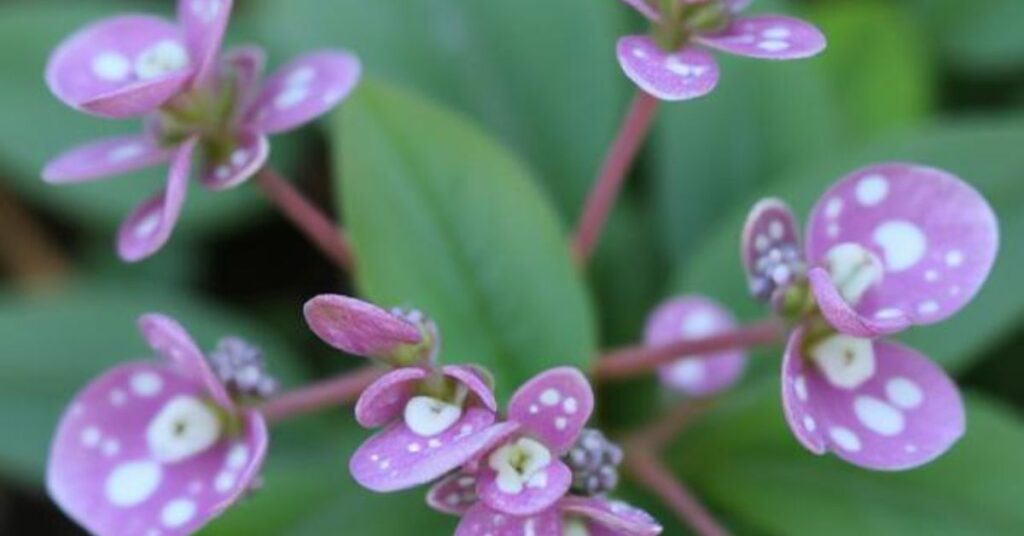
The Chinese money plant, with its round, fleshy green leaves, is stylish and pet-friendly. It thrives in bright, indirect light but adapts to moderate-to-low light conditions.Water infrequently but deeply, allowing the soil to dry out between waterings. are pineapple plants toxic to cats If neglected for too long, its leaves may begin to droop.
- Light: Partial sun
- Water: Give the soil plenty of water, but let it dry out in between applications.
- Soil: Well-draining, acidic to neutral
Banana Tree (Musa spp.)
A dramatic statement plant, the banana tree can grow up to six feet tall, while dwarf varieties reach two to four feet. Its large, tropical leaves are even used in cooking!Safe for pets, banana trees require rich soil, bright light, and consistent moisture to thrive.
- Light: Full sun
- Water: Water regularly; keep the soil moist
- Soil: Loamy, well-drained, acidic
Echeveria (Echeveria spp.)
This stunning, non-toxic succulent forms rosettes in shades of green, blue, silver, or even lilac. Unlike many houseplants, echeveria requires minimal care.To keep it healthy, place it in a bright area that receives four to six hours of sunlight every day.Water only when the soil is arid—usually every one to two weeks. How to Grow Garlic: Planting, Caring, and Harvesting Tips Overwatering can be harmful, but prolonged drought should also be avoided.
- Light: Full sun
- Water: Water when leaves begin to wrinkle
- Soil: Well-draining, acidic
Gloxinia (Sinningia speciosa)
Gloxinia is a compact, flowering houseplant with velvety, ruffled leaves and stunning blooms in red, pink, purple, blue, and white shades. It thrives in low light but requires consistent moisture during its growing season.After blooming, gloxinia enters a dormant phase, dropping its petals and leaves.
- Light: Shade
- Water: Water from the bottom to prevent leaf damage
- Soil: Moist, well-draining, slightly acidic
Spider Plant (Chlorophytum comosum)
Thanks to their cascading, ribbon-like leaves and easy-care Spider plants are a great option for houses that allow pets.They adapt well to various light conditions but prefer partial shade.This hardy plant grows quickly and produces small plantlets, which can be easily propagated.
- Light: Partial shade
- Water: Keep soil moist but not soggy
- Soil: Loamy, well-drained, neutral
Venus Fly Trap (Dionaea muscipula)
A fascinating carnivorous plant, the Venus fly trap captures insects with its snapping leaves. Despite its dramatic feeding behavior, it is safe for cats and dogs.To maintain its health, How to get rid of house plant flies provide bright light and use distilled or rainwater for irrigation.
- Light: Full to partial sun
- Water: Water from the bottom with rainwater
- Soil: Sandy, moist, acidic
Areca Palm (Dypsis lutescens)
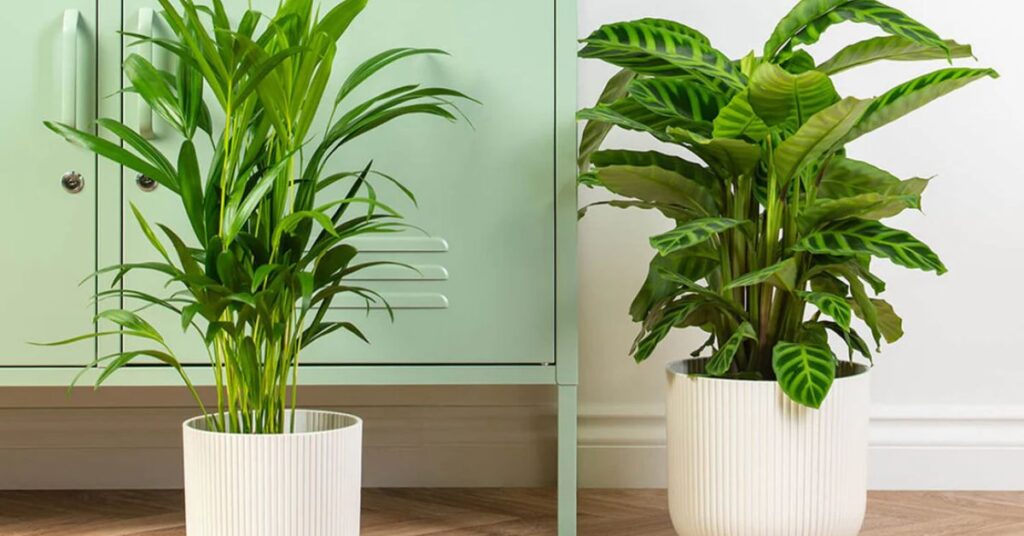
The areca palm, sometimes referred to as the butterfly palm, lends a tropical flair to any space. While its fronds may tempt playful pets, it is entirely non-toxic.Areca palms need bright light and well-draining soil. Be mindful that they are sensitive to fluoride in tap water, so distilled or rainwater is recommended.
- Light: Full to partial sun
- Water: Keep soil moist, but let it dry slightly between waterings
- Soil: Moist but well-drained, acidic to neutral
Calathea (Calathea spp.)
cat friendly houseplants , also known as zebra or peacock plants, have bold, decorative foliage. They thrive in shade and high humidity but require consistent care.To keep their leaves vibrant, Why Fall is the Best Time to Plant Trees avoid direct sunlight and moisten the soil.
- Light: Partial sun to shade
- Water: Keep soil consistently moist
- Soil: Loamy, moist, well-drained, acidic to neutral
Haworthia (Haworthia spp.)
A slow-growing succulent, Haworthia resembles aloe but is entirely safe for pets. Its rosettes of thick green leaves are often banded with white, giving it a striking appearance.This low-maintenance plant prefers bright light but can tolerate lower levels. It needs water weekly in summer and less frequently in winter.
- Light: Full to partial sun
- Water: Water when the top inch of soil dries out
- Soil: Sandy, well-drained, neutral
Polka Dot Plant (Hypoestes phyllostachya)
With its colorful, speckled leaves in shades of green, pink, red, and white, the polka dot plant is a vibrant addition to any space. While non-toxic, excessive consumption might cause mild digestive upset in pets.
- Light: Partial sun
- Water: Water when the top half-inch of soil dries out
- Soil: Moist, well-drained, neutral
Air Plant (Tillandsia stricta)
Unlike traditional houseplants, air plants don’t grow in soil. Instead, they attach to surfaces and absorb moisture from the air.To keep air plants hydrated, soak them in water for 10–30 minutes every one to two weeks or mist them regularly.
- Light: Partial sun
- Water: Soak biweekly or mist throughout the week
Prayer Plant (Maranta leuconeura)
This pet-safe houseplant has an unusual habit—it folds its leaves at night, resembling hands in prayer.Prayer plants prefer humid environments and regular watering. Between waterings, let the top layer of soil dry out a little.
- Light: Partial sun to shade
- Water: Water frequently, but avoid soggy soil
- Soil: Moist but well-drained, neutral to acidic
What Indoor Trees Are Safe for Cats?
If you’re a plant lover and a cat parent, you know the struggle—many indoor plants are toxic to pets. But don’t worry! Plenty of beautiful indoor trees are totally safe for your feline friend.One of the top picks is the Areca Palm. This tree-like plant adds tropical vibes to any space and is non-toxic to cats. Next is the Parlor Palm, another stylish, cat-safe option that thrives in low light—perfect for apartments. Bamboo Palm is another gentle giant that purifies the air while staying friendly to your furry buddy.
Looking for something a bit unique? Money Tree (Pachira aquatica) is safe for cats and believed to bring good luck! The Calathea family, while not technically trees, includes large leafy plants that add height and drama to your home without endangering your kitty.Avoid plants like Fiddle Leaf Figs or Rubber Trees—they look pretty but can be harmful if chewed. Always double-check before bringing any new plant home. You can keep your home lush and pet-friendly with the right indoor trees!
Tips for Keeping Plants and Cats Safe
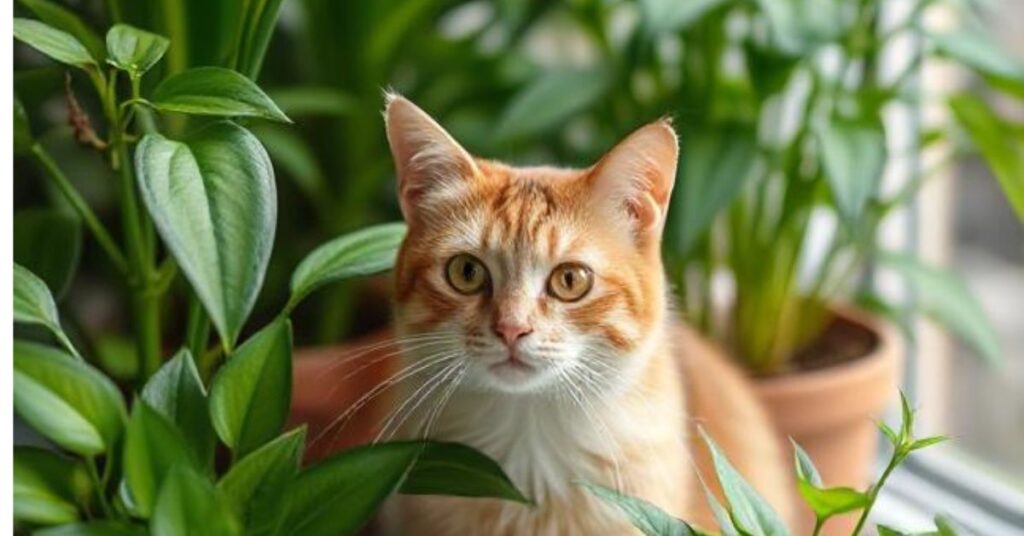
Creating a safe environment for your cat safe house plants and cats requires thoughtful planning. While bringing greenery into your home is exciting, you want to ensure your cat doesn’t chew on or damage the plants. Here are some helpful tips for keeping both your plants and your feline companion safe:
Place Plants in Hard-to-Reach Spots
Position your plants in areas where your cat can’t easily access them. High shelves, hanging planters, or plant stands are ideal spots to keep your plants out of your cat’s reach. Consider using wall-mounted planters or even terrariums to create a visually appealing display without worrying about your cat getting into trouble. How to Grow Calathea Indoors
Use Sturdy, Stable Pots
Cats can be curious and may try to knock over your plants. To prevent this, choose heavy, stable pots that won’t tip over easily. Opt for ceramic or stone planters, less likely to be upturned than plastic ones. You can also use weighted bases to secure your plants and keep them upright.
Create a cat friendly house plants Garden Corner
Set up a designated area for your cat to enjoy plants safely. Cat grass (wheatgrass or oats) is a great option for cats to nibble on. This way, they can satisfy their chewing instincts without harming your other houseplants. It also offers a fun, interactive experience for your cat!
Deterring cat friendly indoor plants
If your cat is particularly attracted to your plants, try using natural deterrents like citrus peels or rosemary around the base of the pots. Since cats frequently detest citrus scents, keeping these items near your plants can keep them away. Another option is plant sprays made from safe ingredients like lavender or eucalyptus designed to deter cats from chewing on plants.
Regularly Check for Toxicity
Even if a plant is labeled as non-toxic, monitoring your cat’s behavior around your plants is always a good idea. If you notice your cat chewing on the leaves or acting unusual, remove the plant immediately and consult a vet if necessary. Additionally, be aware of common houseplants that may be toxic to cats and avoid them altogether (like lilies, pothos, or aloe vera).
Common Toxic Houseplants for Cats
While houseplants can brighten your home, many popular varieties are toxic to cats and should be avoided. If ingested, these plants can cause anything from mild stomach irritation to severe poisoning. Knowing whichhouse plants non toxic to cats pose a risk to your feline friend, especially if your cat is prone to nibbling on greenery, is essential. Here’s a list of some common toxic houseplants for cats:
Lilies (Lilium spp.)
Lilies are highly toxic to cats, especially the Easter lily, Tiger lily, and Asiatic lily. Kidney failure can result from even tiny doses of the herb, and eating can be lethal in certain situations. Lethargy, appetite loss, and vomiting are some of the symptoms. 10 Common Seed Starting Mistakes and How to Fix Them If you have cats, stay away from these plants completely.
Pothos (Epipremnum aureum)
Pothos, also known as Devil’s Ivy,contains calcium oxalate crystals, which can cause oral irritation.produce swelling, and make swallowing difficult ifngested. While it’s a popular choice for its easy care and trailing vines, it is best to keep it away from your cat.
Aloe Vera (Aloe barbadensis miller)
Although aloe vera is frequently used for its therapeutic benefits, it is poisonous to cats. If ingested, it can cause symptoms like vomiting, diarrhea, lethargy, and tremors. Though it’s often found in homes for its health benefits, keeping it out of your cat’s reach is crucial.
Dieffenbachia (Dieffenbachia spp.)
Also called Dumb Cane, Dieffenbachia contains toxins that can cause severe mouth irritation, drooling, and swelling. Chewing on the plant can lead to significant discomfort and breathing difficulties.
Sago Palm (Cycas revoluta)
Cats are extremely poisoned by sago palms. Cycasin is a toxin found in all sections of the plant, but particularly in the seeds.contain a toxin called cycasin, which can cause liver failure, vomiting, diarrhea, and even death if ingested. Keep this plant well out of reach.
Azaleas (Rhododendron spp.)
Azaleas contain grayanotoxins, which can cause vomiting, diarrhea, drooling, and even heart arrhythmias in cats. Chrysanthemums contain pyrethrins, which are poisonous to poisoning, so it is best to avoid this flowering shrub.
English Ivy (Hedera helix)
English Ivy is a popular decorative vine, but if ingested by cats, it can cause vomiting, diarrhea, drooling, and abdominal pain. While it’s safe for human consumption, it’s not for pets.
Chrysanthemums (Chrysanthemum spp.)
cats and can cause poisoning even in little doses. Consuming Ingesting this plant can cause drooling, vomiting, and diarrhea. If your cat friendly plants indoort has chewed on a chrysanthemum, monitor them closely for poisoning symptoms.
Cyclamen (Cyclamen spp.)
Cyclamen is a beautiful flowering plant, but its tubers are highly toxic to cats. If ingested, they can cause vomiting, diarrhea, and heart arrhythmias. Be cautious if you have this plant in your home.
Peace Lily (Spathiphyllum spp.)
Though often considered an easy-to-care-for plant,Crystals of calcium oxalate found in peace lilies can hurt your cat’s mouth and digestive tract. system. Symptoms of poisoning include drooling, vomiting, and difficulty swallowing.
Signs of Plant Poisoning in Cats
If a poisonous herb was consumed by your feline, look for these signs of poisoning:
- Vomiting or diarrhea
- Drooling or excessive salivation
- Lethargy or weakness
- Loss of appetite
- Difficulty breathing or swallowing
Indoor Shade Plants Safe for Cats
Living with cats doesn’t mean you have to give up your dream of a green, cozy home—especially if your space doesn’t get a ton of sunlight. Plenty of indoor shade plants are safe for cats, so you can enjoy a lush indoor jungle without putting your feline at risk.Start with the Spider Plant—a classic, low-light plant that’s non-toxic and even fun for cats to bat at. The Calathea family is another excellent choice. With their colorful, patterned leaves, they thrive in shade and pose no harm to your pets. The No-Brainer Guide to Starting Seeds Indoors Areca Palm and Parlor Palm do well in indirect light and bring that tropical feel without any toxicity concerns.
house plants for cats are another beautiful, cat-safe option that loves the shade. Their leaves fold up at night, giving your room a peaceful, meditative vibe. And don’t forget about Peperomia—these compact plants come in many varieties and are super easy to care for.With these safe and stylish picks, you can turn your low-light home into a serene, plant-filled haven—and keep your curious kitty completely safe.
Conclusion
Choosing indoor cat friendly plants is a great way to bring beauty and tranquility into your home while keeping your feline companion safe. By selecting non-toxic varieties and following simple tips for plant placement, you can create a lush indoor garden that you and your cat can enjoy.However, it’s just as important to be aware of the toxic plants to cats, as Serious health problems can arise from some of the most popular houseplants if ingested. Knowing which plants are safe and which should be avoided can prevent accidents and ensure your home remains a haven for you and your furry friend.
Remember, it’s not just about avoiding harmful plants—it’s also about offering your cat safe alternatives, like cat grass, to satisfy their natural chewing instincts. With some planning and care, your home can be a pet-friendly garden paradise that enhances your space without compromising your cat’s health.
FAQ
What houseplants are safe for cats?
Some of the best cat-safe plants include the Spider cat safe plants indoort, Areca Palm, Calathea, Boston Fern, and Parlor Palm.
Can I grow cat grass indoors?
Yes! Cat grass (like wheatgrass or oats) is an excellent option for indoor gardens and is safe for cats to nibble on. It also helps with digestion and keeps your cat entertained.
Is it okay for my cat to chew on houseplants?
While some cats may enjoy chewing on indoor plants that are safe for cats, providing safe alternatives like cat grass is essential. Chewing on certain houseplants, especially toxic ones, can lead to health problems.
How do I keep my cat away from my plants?
To keep your cat from nibbling on your plants, place them in high, hard-to-reach places, or use natural deterrents like citrus peels or sprays made from ingredients like lavender. You can also place risky plants in areas your cat avoids, such as a closed-off room.
Can I use fertilizers on plants if I have cats?
If you use fertilizers, ensure they are pet-safe and avoid using chemicals or pesticides. Organic or non-toxic fertilizers are the best option for protecting your pets. Always follow the instructions carefully.
Are succulents safe for cats?
Some succulents, like Echeveria or Sempervivum, are safe, but many common varieties, such as Aloe Vera, are toxic. Always check if a particular succulent is safe for cats before bringing it into your home.
Can I grow plants that cats like to play with, like catnip?
Yes! Catnip is a great plant to grow indoors for your cat’s enjoyment. Catnip, cat thyme, and valerian root are safe and fun for cats. Just make sure you monitor your cat’s consumption to avoid overindulgence.
How can I make my plants more appealing to my cat without them eating them?
Try offering a cat-friendly alternative, such as cat grass or catnip. This will allow your cat to chew on something safe while leaving your other plants alone.
Can I keep toxic plants in my home in an area my cat can’t reach?
While keeping toxic cat-safe houseplants out of your cat’s reach may reduce the risk, it’s still recommended to avoid them altogether. Cats can be curious and may find a way to access plants, so it’s always safest to choose non-toxic varieties.

